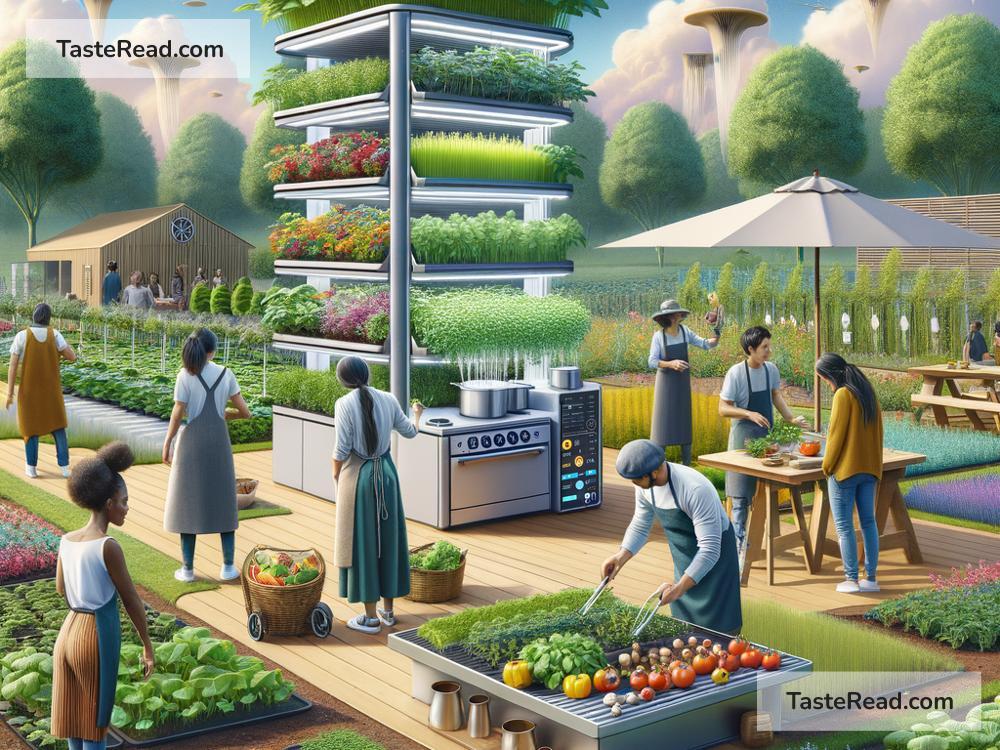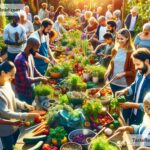The Future of Food and Community-Driven Innovation
Food is more than just fuel; it’s a way to connect, celebrate, and nourish our bodies and souls. But as the population grows and the planet faces challenges like climate change, water shortages, and soil erosion, the way we produce, access, and consume food needs to evolve. The good news? Communities are stepping up, using creativity and innovation to pave the way for a better food future.
Let’s explore the future of food and how community-driven ideas are shaping it.
The challenges facing our food system
Our current food system has served us well over the decades, but it’s starting to show cracks. Here are a few of the big challenges:
- Climate change: Unpredictable weather, droughts, and floods make farming harder. Many crops depend on stable conditions, and dramatic swings in temperature can harm yields.
- Population growth: By 2050, the global population is expected to reach nearly 10 billion. That means we’ll need more food to feed everyone.
- Resource depletion: Farming relies on water, soil, and energy. Overuse of these resources is reducing their availability, making food production more difficult.
- Food waste: A third of all food produced globally is wasted, while millions of people go hungry every day. That’s not just bad economics—it’s bad ethics.
These problems may sound intimidating, but they’re sparking creativity, particularly at the grassroots level.
Community-driven innovation: A growing force
Communities around the world are coming up with innovative solutions. These efforts often focus on sustainability, accessibility, and reconnecting people with the land. Here are a few ways local ideas are shaping the future of food:
1. Urban farming and vertical gardens
Cities might not seem like ideal places to grow food, but urban farming has revolutionized how we think about agriculture. Vacant lots, rooftops, and underutilized spaces are being transformed into gardens that grow fresh produce.
Vertical farming is another exciting idea that stacks crops in layers, using indoor facilities with special lighting and climate controls. Communities are creating urban farms that provide local jobs, reduce transportation emissions, and increase food access in areas that lack grocery stores.
2. Food-sharing platforms
Technology is bringing people together through food. Community-driven apps and platforms make it easier to share surplus produce, meals, or even seeds. For example, a neighbor with too many tomatoes might use an app to offer them to someone nearby who needs them.
These systems reduce waste, build trust between neighbors, and promote fairness in food distribution. They’re also a reminder that sharing isn’t just practical—it builds stronger communities.
3. Regenerative agriculture and soil health
Communities are adopting regenerative agriculture practices to reverse damage caused by industrial farming. This includes techniques like crop rotation, composting, and agroforestry, which restore soil nutrients and reduce carbon emissions.
Regenerative farming often involves educating local farmers and gardeners, empowering them to produce healthier food in harmony with nature. It’s not just about growing crops—it’s about rejuvenating the earth.
4. Cultural food revival
Around the world, communities are rediscovering traditional food practices. These often include using native plants, eating seasonally, and honoring food preparation methods passed down through generations.
Reviving cultural practices helps preserve diversity in diets and crops while strengthening local identity. Plus, many traditional ways of growing and preparing food are naturally sustainable!
5. Community kitchens and meal programs
Communities are addressing hunger and food insecurity by setting up shared kitchens and meal programs. People can come together to cook and eat, regardless of their economic situation. Some organizations take it further by rescuing food that would otherwise be wasted and turning it into healthy meals.
These initiatives are much more than food delivery—they promote connection, reduce stigma, and ensure everyone has access to nutritious meals.
Food innovation’s high-tech side
While smaller, community-driven efforts are growing, technology is also making its mark in food innovation:
- Lab-grown meat: Scientists are developing ways to grow meat in laboratories. This could someday provide protein without harming animals or the environment.
- Plant-based alternatives: Companies are creating new plant-based products that mimic meat, cheese, and eggs. These options reduce reliance on animal farming and appeal to eco-conscious eaters.
- Smart farming: Remote sensors, drones, and AI are helping farmers optimize crop yields while using fewer resources. It’s like farming with a digital assistant!
- Food delivery drones: Could your future meal be delivered by a flying robot? Companies are experimenting with drone delivery to get fresh food faster.
These advances are exciting, but they work best when paired with community involvement. After all, technology alone won’t solve food insecurity or waste—it takes people working together to make new tools effective.
A shared responsibility
So, what does the future of food look like? It’s a mix of creativity, collaboration, and sustainability. Communities are proving that small changes can make a big impact. Whether it’s growing herbs in an apartment, starting a compost program, or organizing a food-sharing group, every effort counts.
The challenges are real, but so is our power to overcome them. By supporting local initiatives and embracing innovation, we can build a food system that nourishes everyone—people and planet alike. The next time you enjoy a meal, take a moment to think about all the people and ideas that went into making it. Perhaps you’ll be inspired to join the movement for change!
The future of food isn’t just about technology or farming—it’s about community. And together, we can create a world where everyone has access to healthy, sustainable food.


